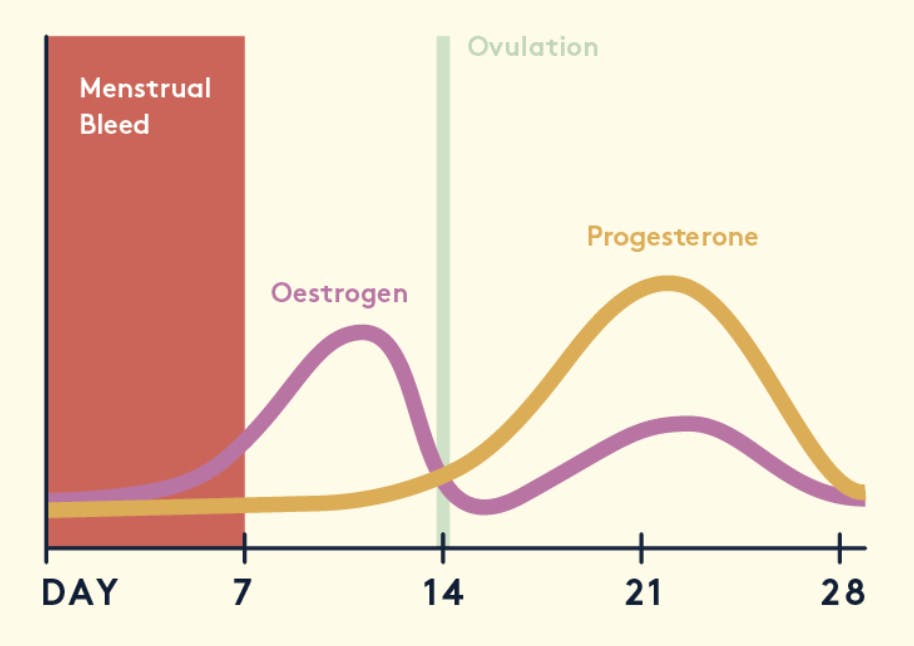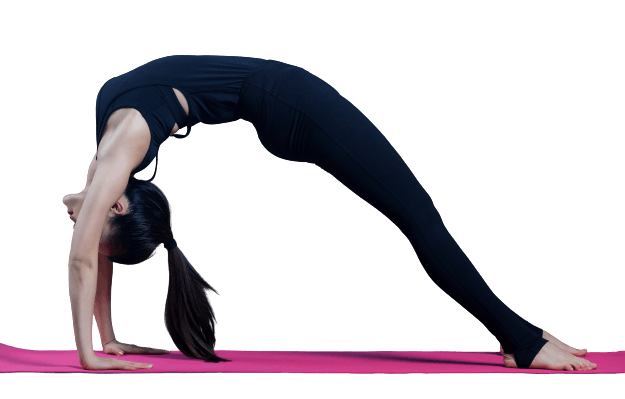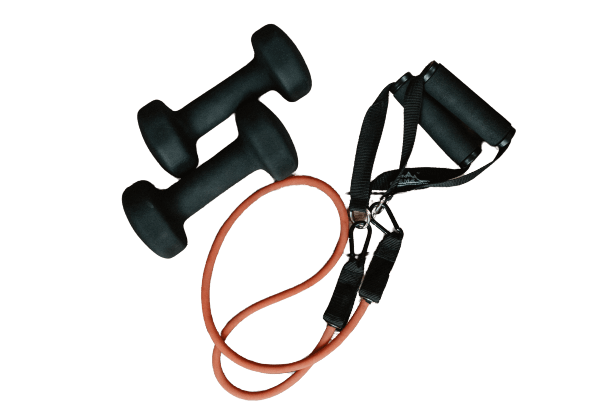Table of contents
1. Syncing exercise with your cycle
2. Exercise for period cramps
3. Can exercise affect your period?
4. Getting started
Ever struggled to lift a weight you could normally lift with ease? Ever stopped midway through a run because you weren't quite feeling it? It’s your body trying to tell you something - this probably isn't the time of the month to be doing this gal. Our menstrual cycles are made up of four phases, and during those phases everything fluctuates; from our energy levels to our sex drive, our hormones to our susceptibility to pain, and our cravings to our anxiety. Yep, we’re more up and down than an episode of Succession.
72% of women say they have never received any education regarding exercise and their menstrual cycle, and 1 in 4 women admit to not understanding their menstrual cycle - so it’s no wonder that syncing your workout routine to your period is still unfamiliar to lots of women. But syncing exercise to your period could bring a host of benefits to your fitness, energy levels, skin, mood, and much more.
Syncing exercise with your cycle
Our cycle goes through four stages: menstruation, follicular, ovulation, and luteal. Hormone levels differ at each stage - which impacts our mental health, as well as our propensity for exercise - and understanding where our body is at during these different stages is central to cycle syncing.
“
72% of women say they have never received any education regarding exercise and their menstrual cycle
“A nice analogy which is really helpful is to connect it with the seasons“, says Le’Nise Brothers, a nutritionist and yoga teacher, who specializes in women's health and the menstrual cycle.
“People really connect with the idea of menstruation being the ‘inner winter’. We want to hibernate, emotionally you can feel quite flat, and your energy might be at its lowest - so from an exercise point of view you’re not going to expect to hit any personal bests at this point, it's really about tuning into your body, and moving in a way that suits you at that time.”

During our period it's important not to push ourselves too much, so gentle walks and swims are the best forms of exercise to move our body - but if you need to take a time-out altogether, then make sure you honour your body’s needs. Yoga and foam rolling can also really help; any kind of stretching is commonly thought to help alleviate period pain.
“The next phase is the follicular phase, or the inner spring” says Le’Nise. “This is where our energy starts to rise as our estrogen levels rise. Mentally it's that feeling of coming out of the woods.”
This phase is when we’re the most likely to try new things, and it's also easier to build muscle strength and muscle mass - making this the perfect time to try out different exercises and lift heavier weights. We experience a higher pain tolerance and improved muscle recovery during the follicular phase, so strength training is really the go-to here.
“Ovulation, our inner summer. Estrogen peaks, and we combine that with progesterone, which is our calming, anti-inflammatory hormone. So from a mental perspective, this is a time when many of us can feel our best.”

Your body is essentially trying to get you pregnant at this point; you’re feeling more confident, sexual, and energetic, and testosterone is also coming out to play. Use this time for high-intensity interval training, endurance training, spin classes and bodyweight circuits. You have a lot of energy at this point, so boxing is also a great shout.
Finally, the luteal phase.Your body is preparing yourself for its period so it's good to slow down, although as Le’Nise points out, “some people they get this burst of energy, where its like the body wants us to be fully prepared before we hibernate for the winter. I call it ‘get s**t done energy’”.
During this stage, mobility and recovery are key - so look to be doing yoga, pilates, barre classes. Elevated progesterone levels mean more relaxed muscles and ligaments. Slow and steady really does win the race here - so try to do longer sessions, lower intensity exercises, and incorporate longer rest periods.
Exercise for period cramps
OK so this is all very well and good, but what if the only working out we feel like doing during our menstrual phase is walking to the door to collect our Gorilla’s order? If even moderate exercise during our period seems out of reach, then that's completely normal, but it's worth bearing in mind that in a 2019 study by St Mary’s University found that exercising did improve period-related discomfort for 78% of women.

Why? Well the study did not provide a specific explanation, but the most likely reason is that the endorphins released during exercise help to minimize our feelings of pain and discomfort. Additionally, exercise reduces the amount of prostaglandins in the body, which are compounds in the body responsible for period cramps.
However, certain kinds of movements can also exacerbate period pain, so try to avoid positions and exercises that will put excess pressure on your pelvic area - give a wide berth to headstands, hip thrusts, and any kind of heavy lifting.
Can exercise affect your period?
The average length of a menstrual cycle is 28 days, but it's normal for one to last anywhere between 21 and 40 days. Lots of things can alter a cycle’s length, including stress, medication, diet, and exercise.
“
Regular exercise taken in a healthy way can actually lead to lighter periods
Excessive exercise places a stress on your body, and this can interrupt the balance of hormones which are linked to our periods. This can cause some women not to ovulate, meaning they miss a period - this is called amenorrhea. But for others, regular exercise taken in a healthy way can actually lead to lighter periods. Missing periods on the odd occasion is not abnormal, but if you find it to be a regular event, then speak to your doctor.
Getting started
Tailoring your workout routine to your menstrual cycle is all about working with your body rather than against it.
“The first thing to do is to take it day by day - rip up your rigid schedules, really look at where you are in your menstrual cycle, and try to build your exercise around that. Start tracking your menstrual cycle on day 1, this equals day 1 of your menstrual cycle”, says Le’Nise.
It’s important to keep in mind that everyone’s body is different, and so is their cycle. Cycle lengths vary and we don't all respond to the hormone fluctuations during them in the same way. Depending on the type of contraception you’re on, cycle syncing might not be right for everyone - bearing in mind not all women have periods.
There are so many apps and programmes out there now to help you to get in touch with your cycle and exercise in sync with it, but really the best advice is to listen to your body! You know it better than anyone, so whether it’s hitting the recharge button or chasing those personal bests, do what you need to make your body feel good.






